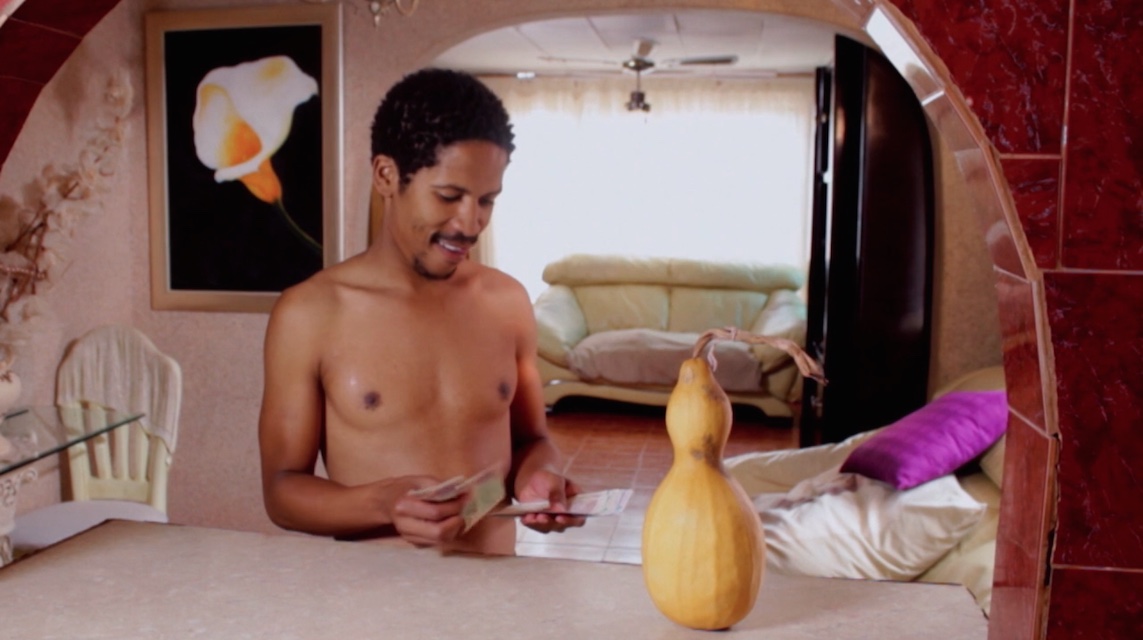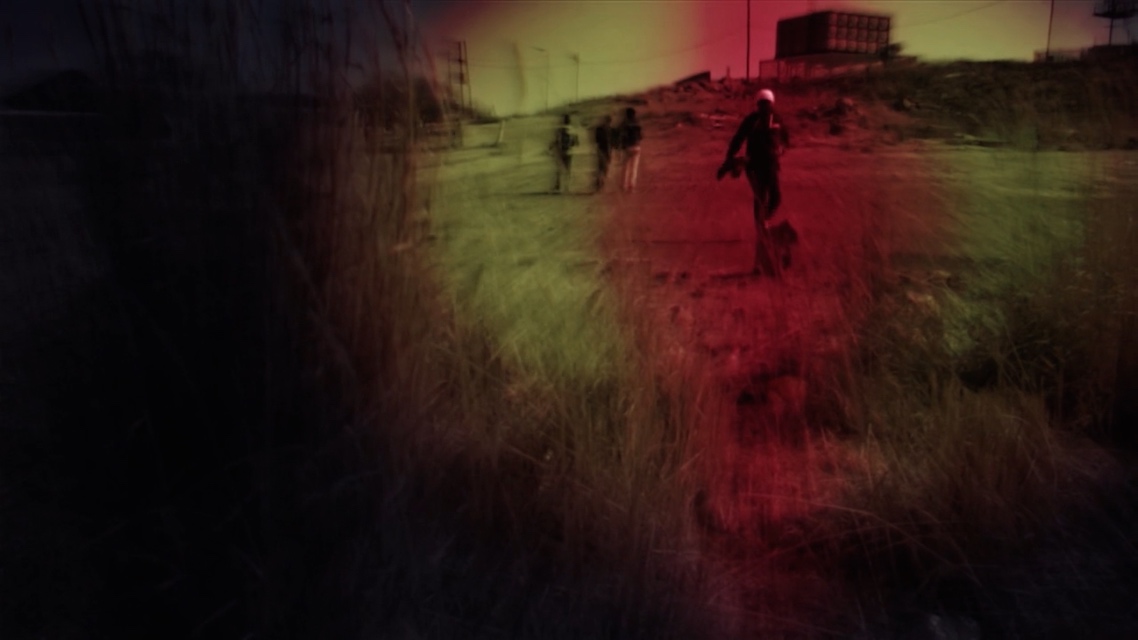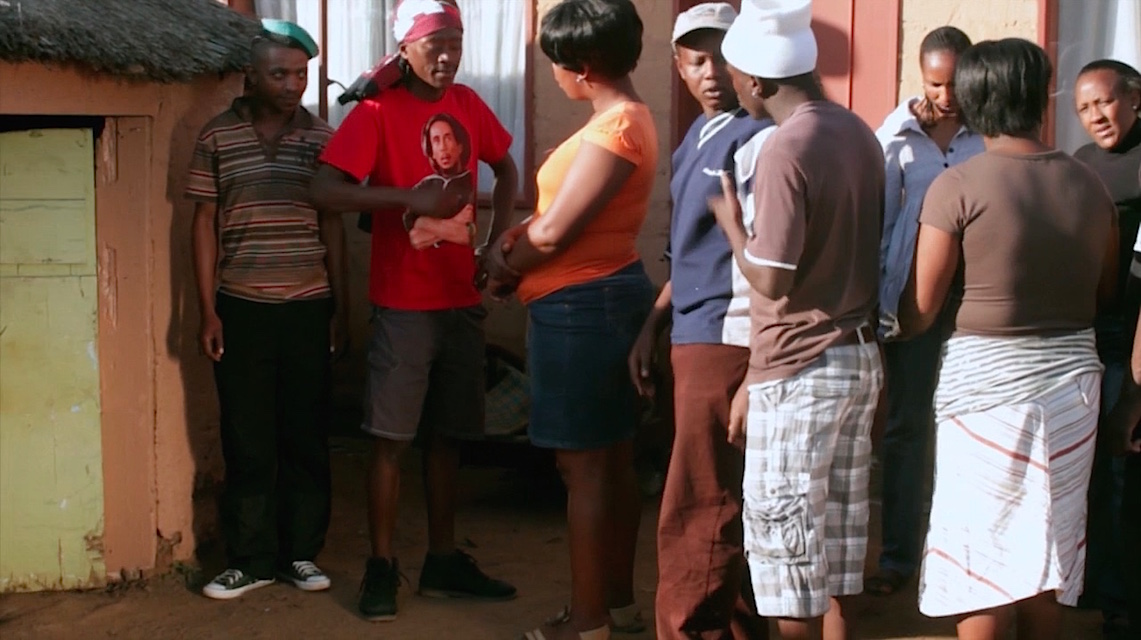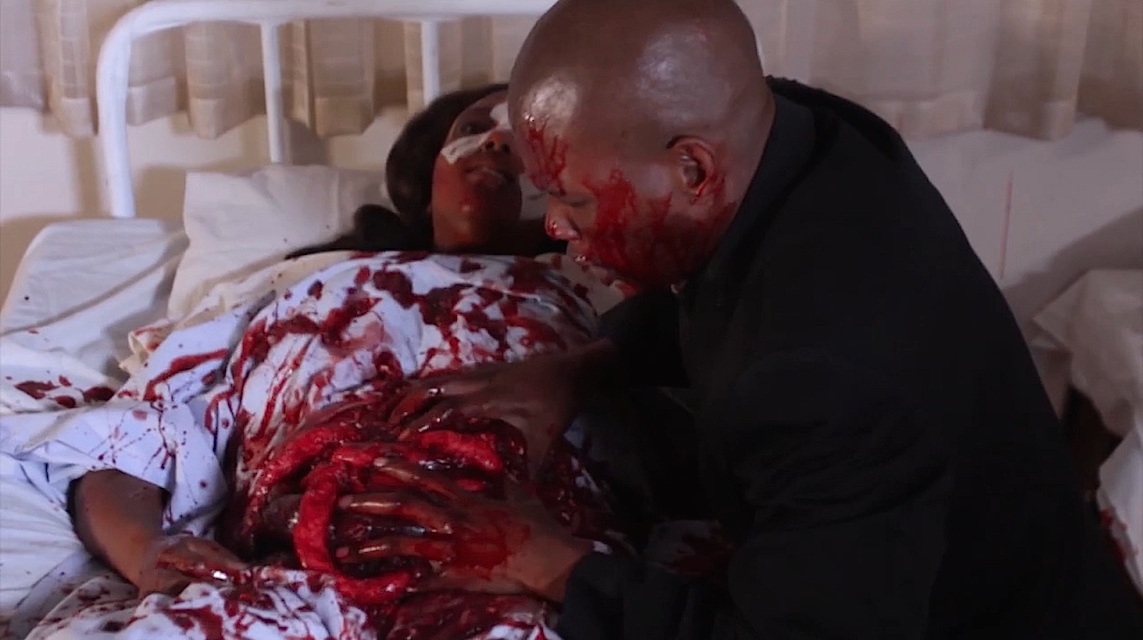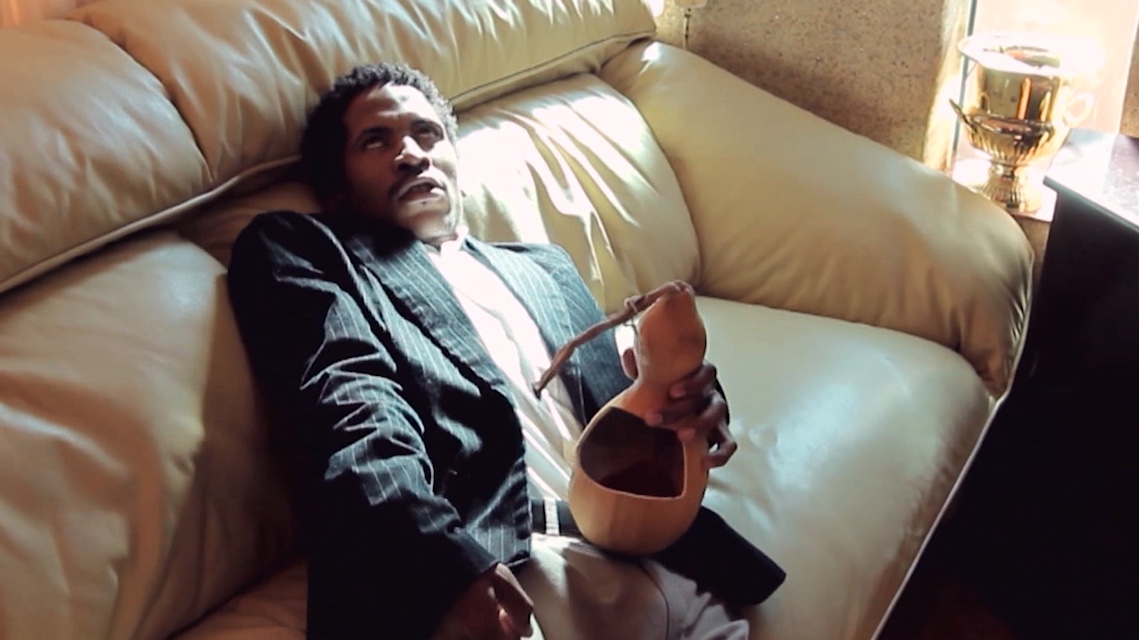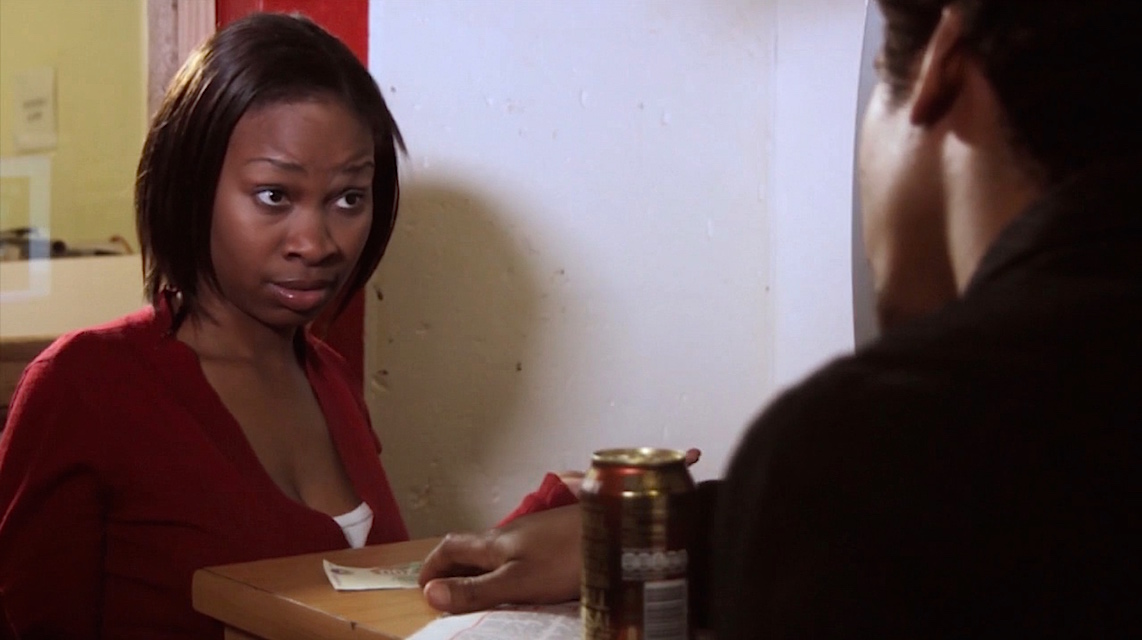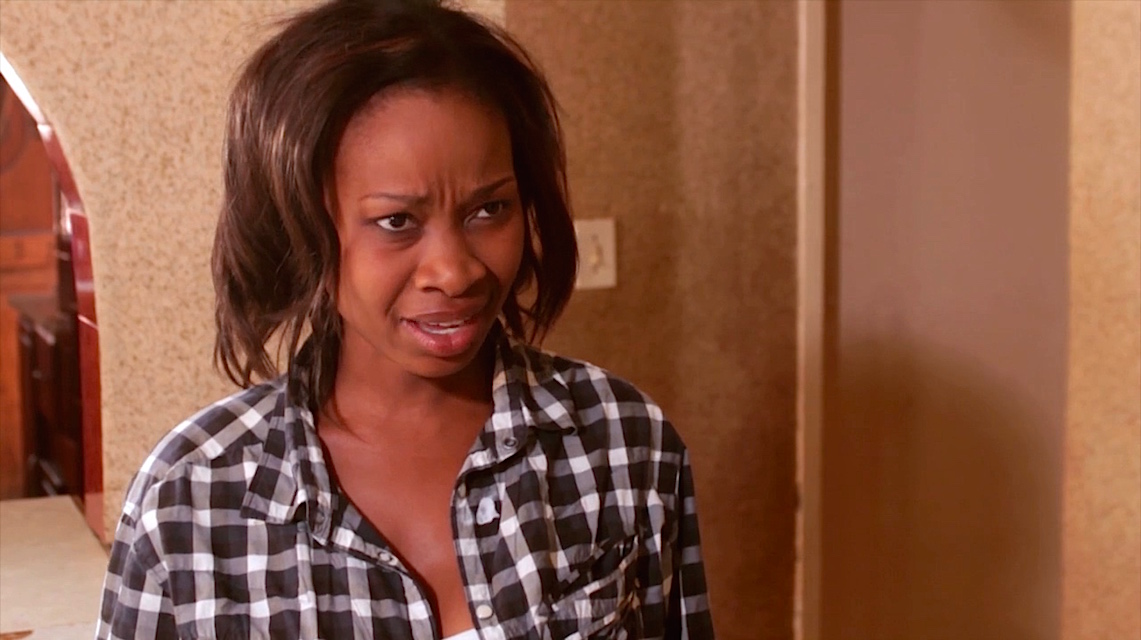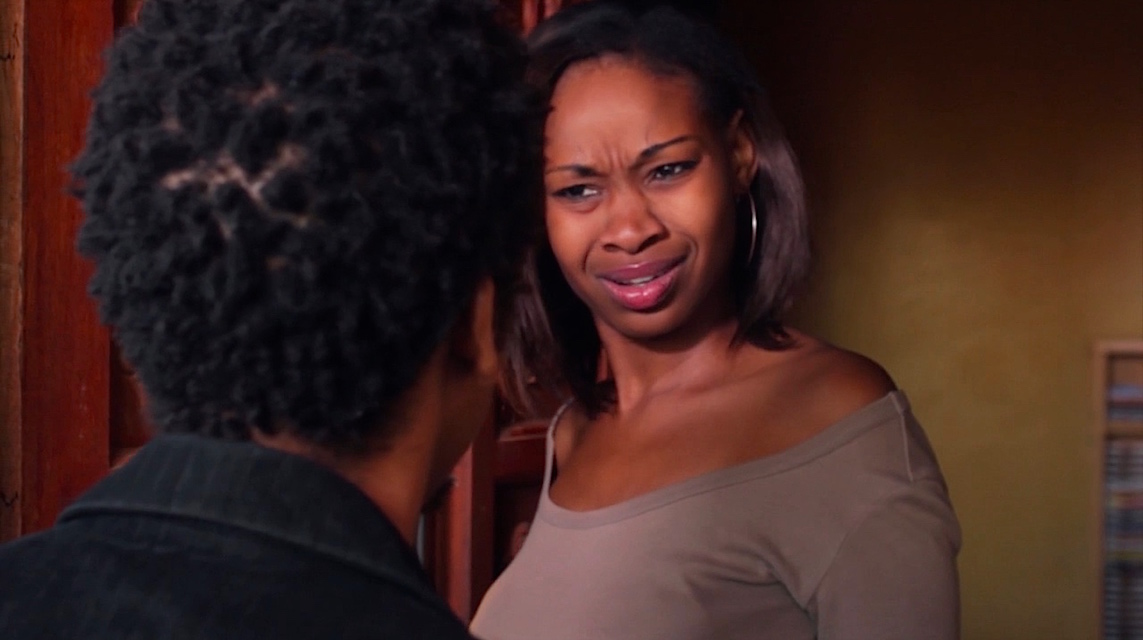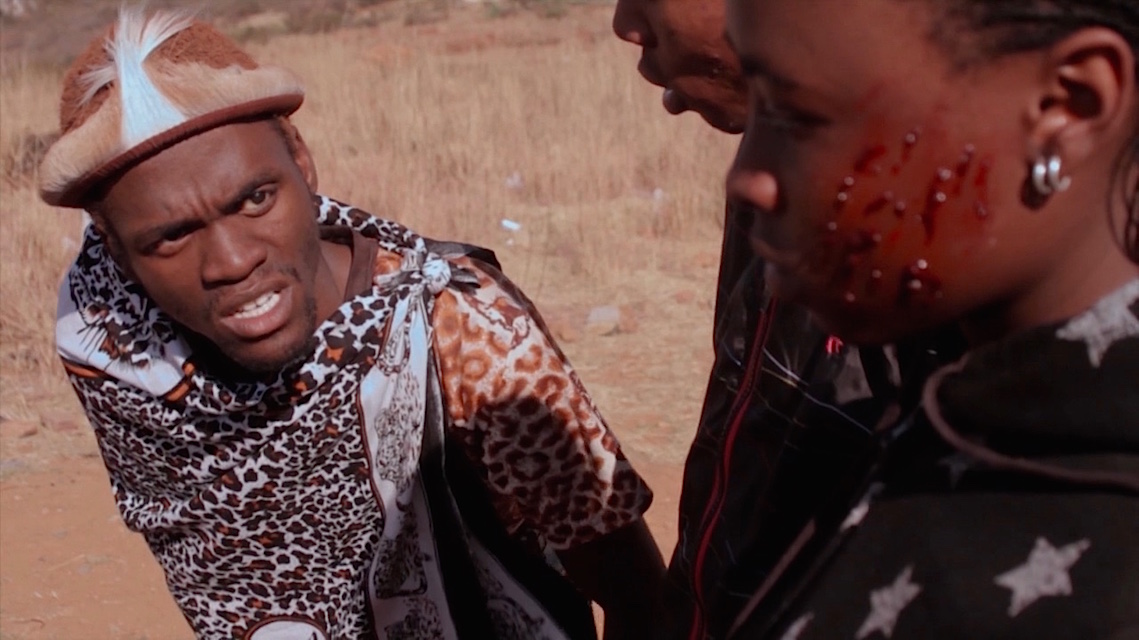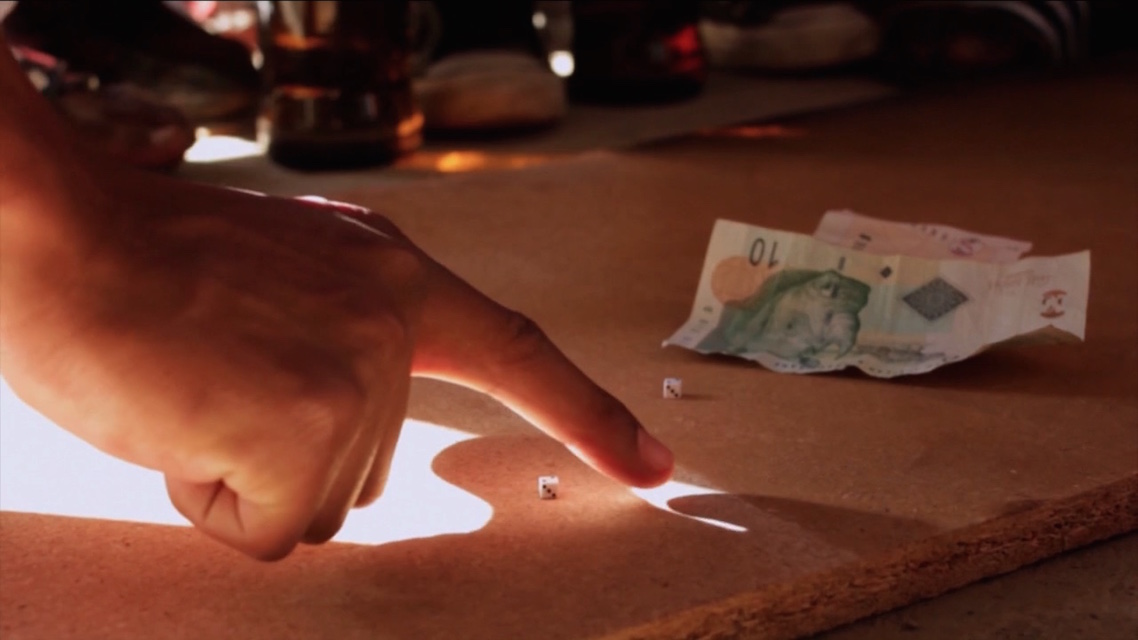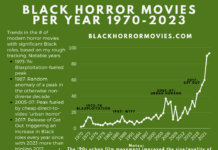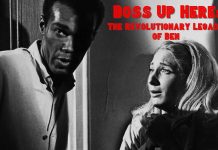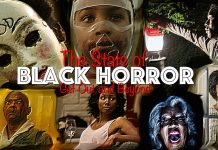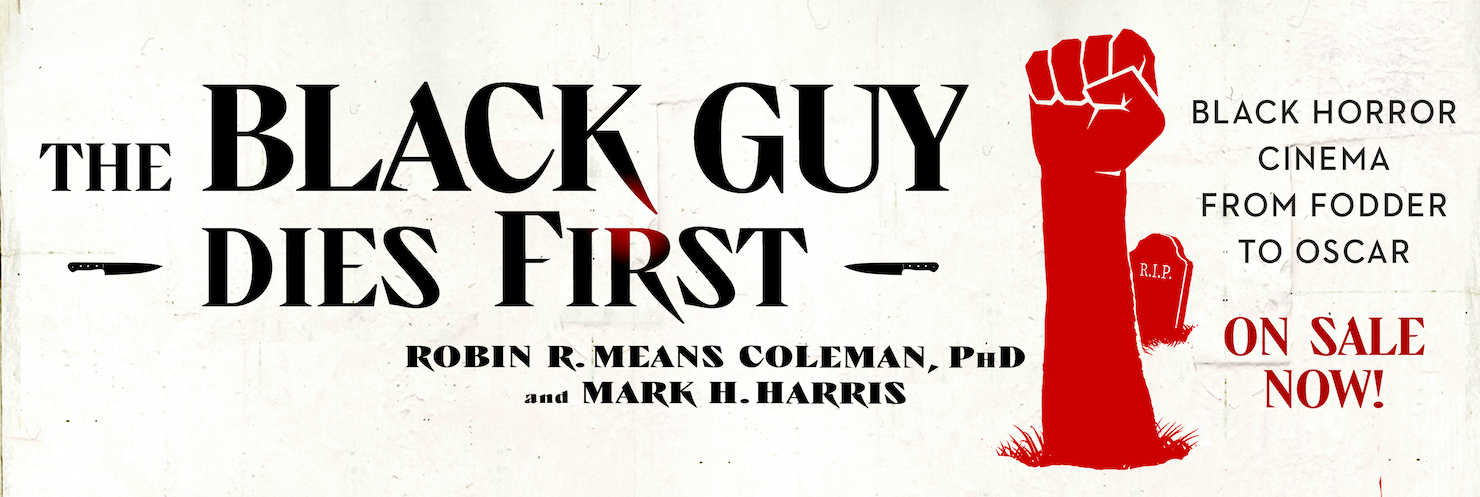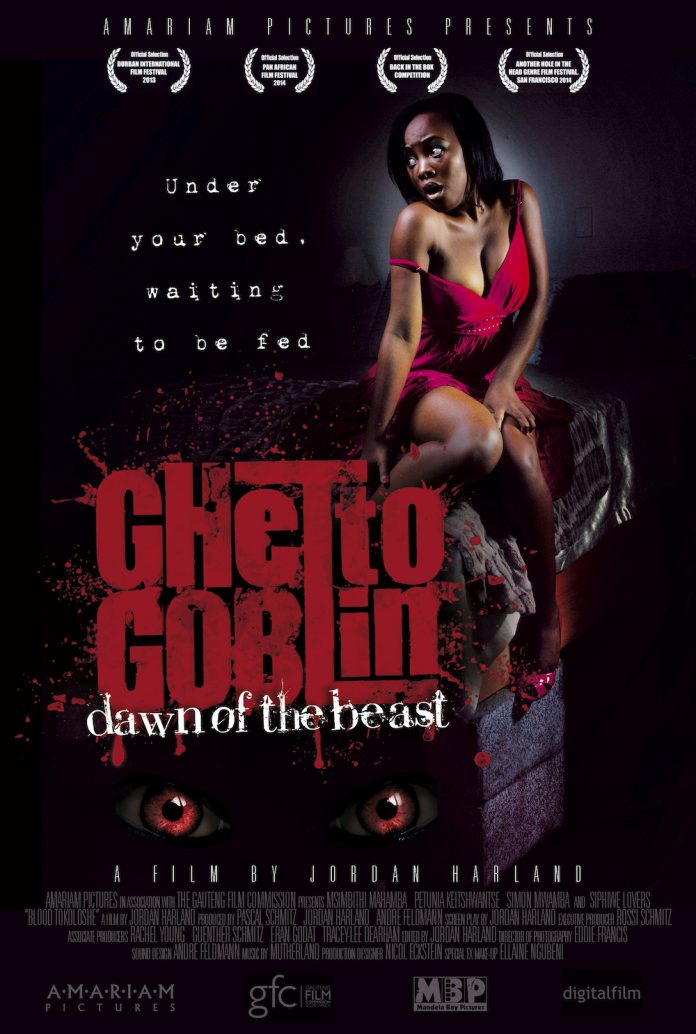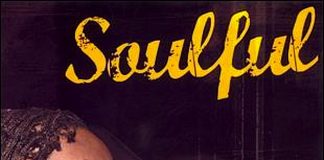I’ve seen a few African horror movies, but mostly they’ve been moderately budgeted, relatively mainstream efforts from white filmmakers with primarily white casts, like Richard Stanley’s Dust Devil. I’m thus by no means an expert on the continent’s horror offerings, but my sense is there have been quite a few all-black African horror productions over the years, particularly from Nigeria’s “Nollywood” industry. Ghetto Goblin, however, comes from further south — South Africa, to be exact — although it does revolve around what I sense is a recurring theme in African horror: religious belief, both imported (Christianity and Islam) and indigenous.
Before I delve into the plot, let me address the elephant in the room. I don’t know where the title Ghetto Goblin came from, but the movie was originally called Blood Tokoloshe. I assume the title was changed to create more international (read: American) appeal, because the assumption appears to be that “ghetto” sells — an outdated philosophy that has died down since the avalanche of late ’90s/early ’00s “urban horror” that included titles like Tales from the Hood, Leprechaun in the Hood, Hood of the Living Dead, Street Tales of Terror, Snoop Dogg’s Hood of Horror, Gangs of the Dead and Mutant Vampire Zombies from the ‘Hood.
A more acceptable reason for changing the title is that no one outside of South Africa knows what the heck a tokoloshe is. In Zulu folklore, it’s a malicious spirit, and in this story, it’s conjured by a local man named Mthunzi (Msimbithi Mahamba) who asks that it grant his wishes on a regular basis — mostly money and the affection of any woman unfortunate enough to cross his path. As evil conjured spirits are prone to do, it demands a price for granting these wishes: the night after he makes a wish, it collects payment in blood from someone (always female, for some patriarchal reason) in his township.
Initially, it’s just a non-fatal, vampire-like bite here and there — which Mthunzi seems A-OK with — but as his wishes pile up, the viciousness of the attacks increases, and bodies start to fall. On top of that, he also breaks a set of rules about thanking the tokoloshe and not letting blood spill from the magical gourd he uses to make the wishes, so the creature sets its sights on Mthunzi. But before it kills him, it decides to go after all the women he bedded thanks to the wishes — including his latest girlfriend, Boithumelo (Petunia Gabrielle Modisapodi), for whom Mthunzi actually has feelings that don’t emanate solely from his genitals.
Ghetto Goblin is a typical Faustian tale with a predictable outcome, but there are elements of its juxtaposition within a black South African township that I found fascinating as an outsider. Most notably, the role of Christianity and traditional religion in people’s lives and the extent to which the two interact with each other are easily the most intriguing parts of the film.
In the story, two local religious leaders — Christian Reverend Simon (Simon Msizi Nwamba) and a traditional spiritual healer (a “sangoma”) named Bheka (Siphiwe Masinga) step forward to help the townspeople. While the reverend dismisses rumors that the attacks are the work of a tokoloshe — he doesn’t believe in such fairy tales — the sangoma insists the culprit is indeed a supernatural being. Bheka is thus more in touch with the pulse of the population, but the reason he’s so sure the tokoloshe exists is HE’S THE ONE WHO SHOWED MTHUNZI HOW TO CONJURE IT. Oopsie.
I imagine in real life, there’s a conflict of indigenous religion versus imported religion — and from what I’ve read about Nollywood, the former is often portrayed negatively — but Blood Tokoloshe handles it deftly and never seems to overtly take sides. While in the end, Simon takes on more of a heroic role than Bheka, he also comes off as more haughty, thinking he’s better than Bheka and initially refusing to work with him while refusing to take the locals’ fear of a tokoloshe seriously. And while Bheka is basically the one who caused the whole mess, he’s also more a man of the people. Everyone lines up for his help when Simon is of no use, and he’s able to converse with them in their native Zulu language (Simon speaks English), giving them specific spells to use while all Simon can do is pray.
Blood Tokoloshe is thus more engaging as a sociological study than as actual cinematic entertainment. It’s unoriginal and has the unpolished acting, direction and dialogue you’d expect from such a low-budget film. I can’t compare it to other all-black African horror fare, since I haven’t seen any others, but it’s certainly on par quality-wise with a lot of cheapie American films that head straight to video each week.
